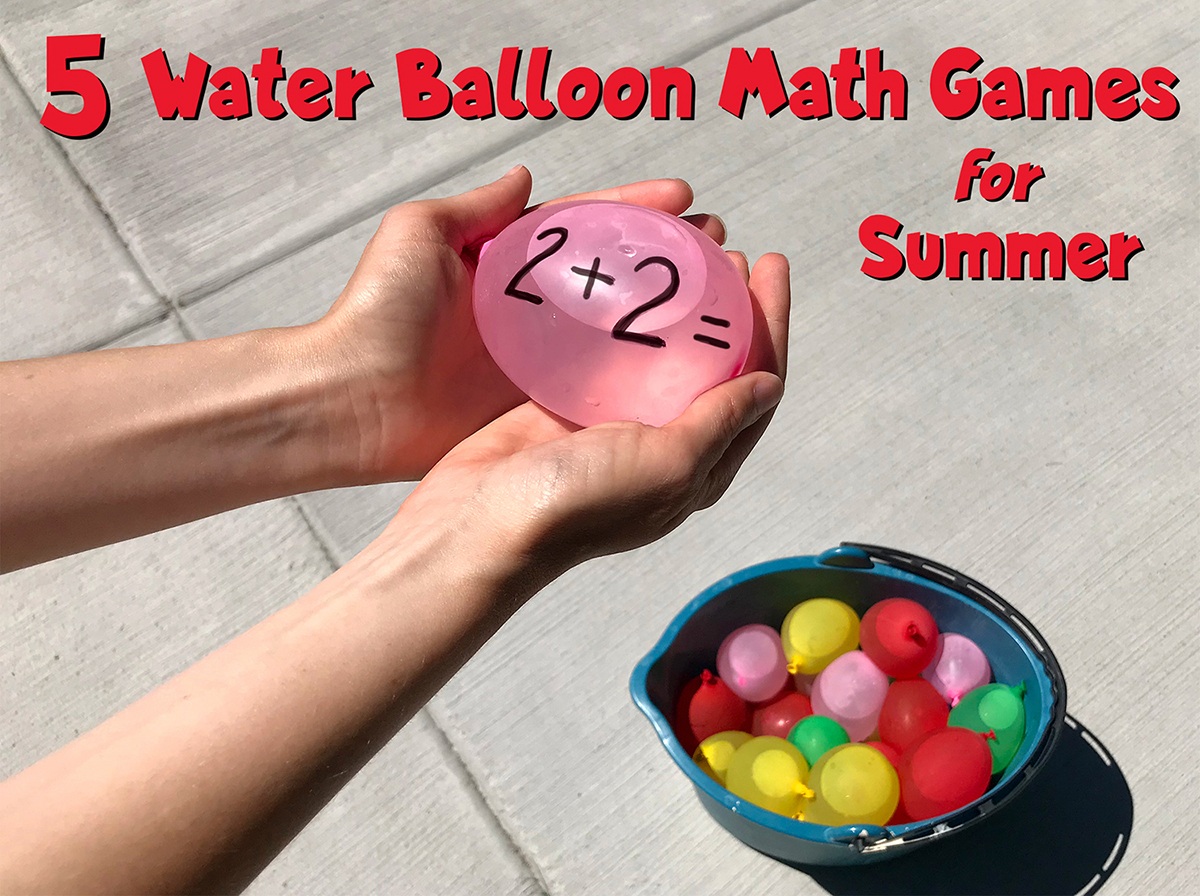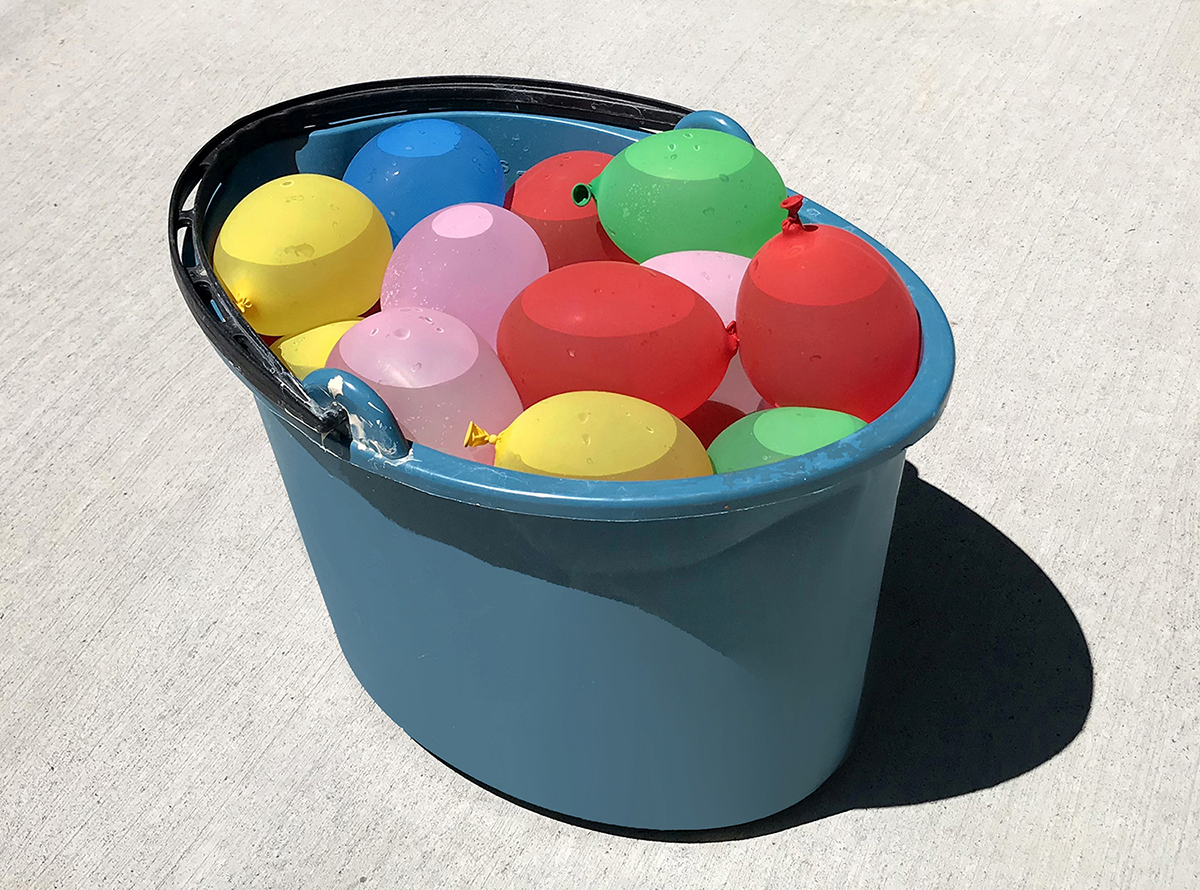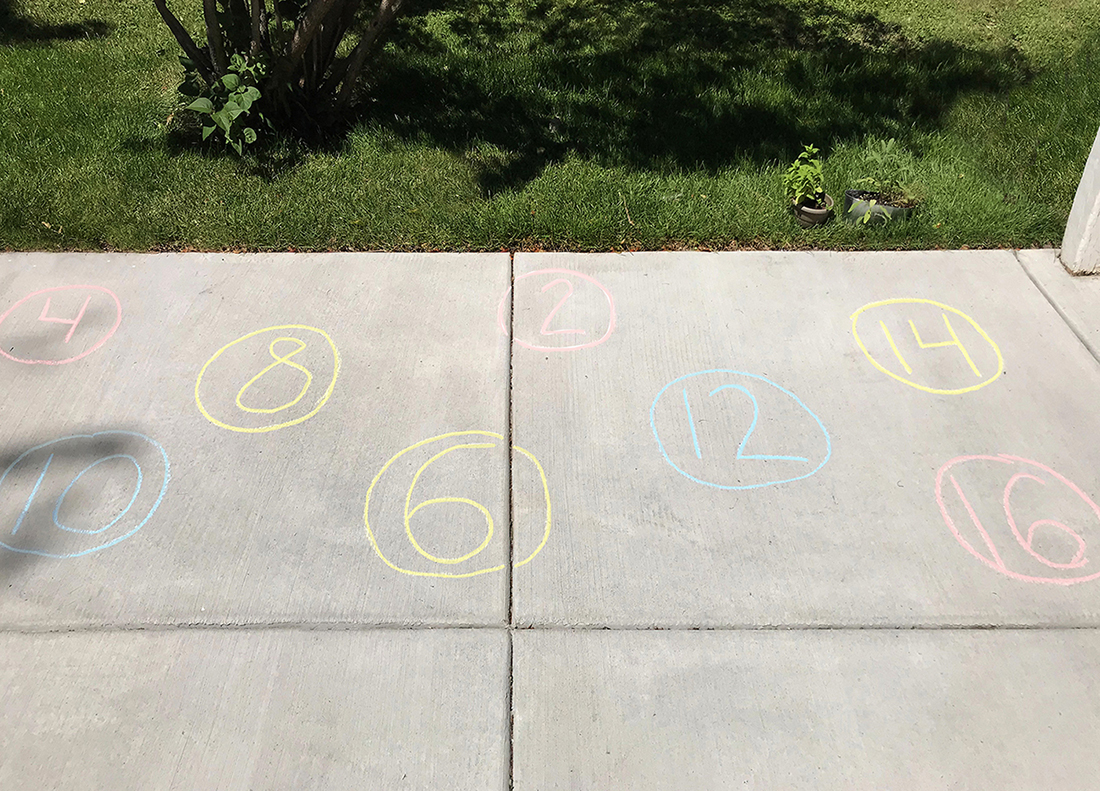
Summer is here to stay! To celebrate the arrival of this glorious season, we're featuring five fun water balloon games you can play with little ones to help them practice math skills. Grab a pack of water balloons and head outdoors to soak up the sunshine. We'll help you make a splash with the best water balloon math games around! Read on to find out more.

Before the water balloon games begin, make sure you have your supplies ready. In addition to a pack of water balloons, you will need a bucket, a permanent marker, and sidewalk chalk. We'll suggest a number of water balloons you will want to have filled for each activity, but it doesn't hurt to have extras in case some break or you want to provide some unstructured water balloon play before or after the activity.
Try out the games below and be sure to tag @iknowit on social media so we can check out your water balloon shenanigans!
Fill up between 15 and 20 water balloons for this activity.
Practice skip counting by 2s, 3s, 4s, 5s, 10s, 20s, 100s, or any number with this simple game.

Assemble your water balloons and place them carefully in a bucket. Draw circles on the sidewalk or driveway. Make as many circles as there are water balloons. Fill the circles with numbers that you want your students to practice skip counting. For example, if you want little ones to practice skip counting by 10s, fill up the circles with the numbers 10, 20, 30, 40, and so on. Be sure to mix up the order of the numbers so none of them are consecutive. You may have 60 at one end of the sidewalk and 20 at the other end, for example. Kids will throw water balloons, one at a time, at each circle as they skip count the numbers in consecutive order.
To make this a two-player or multi-player game, use a greater variety of numbers. Assign each player a skip counting number. For example, Player 1 may skip count by 2s and Player 2 may skip count by 3s. Kids take turns throwing their water balloons as they skip count by their assigned number.
This activity is ideal for students in kindergarten, first grade, second grade, or third grade.
Fill up between 15 and 20 water balloons for this activity.
Practice even and odd numbers with this two-player game.
Assemble your water balloons and place them in a bucket so they are ready to use. Draw circles on the sidewalk or driveway. Make as many circles as there are water balloons. Fill the circles with a variety of even and odd numbers. The numbers do not have to be consecutive. You could fill the circles with the following numbers, for example: 3, 22, 19, 6, 47, 12, 83, and 16.
Assign the roles of "Even Steven" and "Odd Todd" to two players. The game plays out very similarly to two-player Skip Count Splat. Kids will take turns throwing water balloons at the number targets. Even Steven will find the lowest even number and work up to the highest even number. Odd Todd will do the same with the odd numbers.
This activity is ideal for students in first grade, second grade, and third grade.
Fill up 20 water balloons to practice basic addition, subtraction, multiplication, and division facts with this fun game.
Assemble your water balloons and use a permanent marker to write a math fact on each water balloon before placing it in a bucket. You can use a single operation for all your math facts, like addition or subtraction, or you can mix up the math facts using the four basic operations.
Draw 20 circles on the sidewalk or driveway and fill them with a variety of numbers. Be sure to include a number to complete each math fact written on the water balloons. Kids will take turns choosing a water balloon from the bucket and saying the complete math fact out loud. They will throw their water balloon at the number that completes the math fact.
This activity is ideal for students in first grade through fifth grade.
Fill up 20 water balloons to practice place value in this multi-player game.
Assemble your water balloons and use a permanent marker to write a number on each water balloon before placing it in a bucket. Use a variety of two-digit, three-digit, four-digit, and even five-digit numbers. Underline the digit in the ones place, tens place, or hundreds place for every number.
Make sure you have enough place values to match the number of players in this game. For example, if five children are playing the game, be sure to use numbers with up to five digits. Assign a place value to each child. One player will represent "Ones Place," another player will represent "Tens Place," and so on. Players will stand in a circle very close together with the bucket of water balloons in the middle.
Players will take turns choosing a water balloon from the bucket. Each player who takes a turn will say the value of the underlined digit out loud. He or she will pass the place value to the correct player. For example, if the player chooses the number 316 with the one underlined, he will pass it to the player representing the tens place.
Each time a player takes a turn and passes the place value, the whole group will take one step back. The players will have to toss the balloons farther apart each round. Any time a player drops a water balloon, he or she is "out." The last player to drop a water balloon wins the game.
This activity is ideal for students in first grade through fifth grade.
Fill up 10 water balloons to practice telling time with this exciting water balloon game.
You will need a few extra supplies for this game, but feel free to use whatever comparable items you have on hand. Make sure you have little stakes you can set up in the ground. You could use wooden kabob skewers or even the metal hoops from a croquet set or anything similar. You will also need some paper and duct tape to make analog clock "targets" for kids to throw at.
Assemble your water balloons and use a permanent marker to write a time in either hour, half-hour, fifteen-minute, or five-minute increments on each water balloon. Place all the water balloons in a bucket.
Set up a row of evenly spaced stakes in the yard. Label each stake with a large hand-drawn analog clock. There should be an analog clock target to match each water balloon.
Kids will take turns choosing a water balloon from the bucket, reading the time out loud, and throwing their water balloon at the matching analog clock target.
Feel free to put a bin or bucket in front of each stake to give kids something to toss their water balloon into. Make sure players are standing far enough away from the targets to make it a little challenging to toss the water balloons, but not so far that it becomes unclear which analog clock they were aiming for! Make adjustments as needed.
This activity is ideal for first grade, second grade, third grade, and fourth grade.
Did you use water balloons to practice math skills with your little learners? We want to hear from you! Tell us how it went and leave your feedback in the comment section below.
Looking for more fun activities to keep your students' math skills sharp over summer break? We've got you covered! Visit iKnowIt.com to practice math skills with fun, engaging math practice activities. See you there!
{{elem.comment}}
Reply